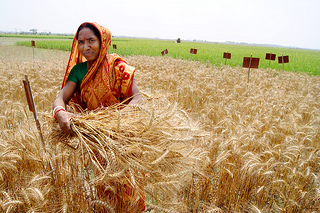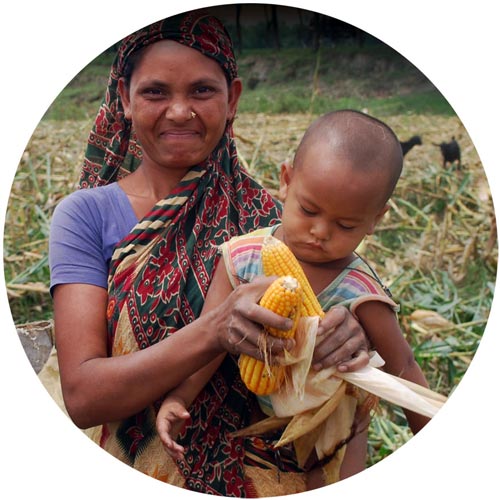 Addressing the gender disparities between women and men farmers in the developing world represents a significant development potential in itself. The FAO 2011 State of Food and Agriculture report estimates that if women had the same access to production resources as men, they could increase yields on their fields by 20-30%. According to FAO, this alone would raise total agricultural output in developing countries by 2.5-4%, which, in turn, could reduce the number of hungry people in the world by 12-17% or 100-150 million people.
Addressing the gender disparities between women and men farmers in the developing world represents a significant development potential in itself. The FAO 2011 State of Food and Agriculture report estimates that if women had the same access to production resources as men, they could increase yields on their fields by 20-30%. According to FAO, this alone would raise total agricultural output in developing countries by 2.5-4%, which, in turn, could reduce the number of hungry people in the world by 12-17% or 100-150 million people.
The 16 CGIAR Research Programs (CRPs) are developing strategies to integrate gender into research. Among the first CRPs to undertake a gender audit of their activities, WHEAT and MAIZE organized a workshop about how to implement the gender audits on 10-11 December 2012, facilitated by gender specialists Chris Hunter and Katrine Danielsen, both from the Royal Tropical Institute (KIT), a research partner to MAIZE and WHEAT CRPs based in Amsterdam, the Netherlands.
“A gender audit is an assessment by which organizations can identify how they are addressing gender within their research programs and organization. It implies that the organization will assess their performance against some standards,” explains Chris Hunter, Senior Advisor on Social Development and Gender Equity. “Many organizations, such as CIMMYT, don’t currently have a gender policy, so the gender audit assesses performance against best practice, meaning that what we are doing should be positive towards both men and women.”
Challenges of gender mainstreaming were first discussed at the Fourth World Conference on Women in Beijing in 1995. During this conference it was recognized that just having a few add-ons for women did not work. “In a subsequent conference (Beijing +5,) it became clear that it still wasn’t always working, so gender audits were, in part, a response to that,” adds Hunter, “it is about what we have been doing and identifying where we are getting stuck.”

How is a gender audit conducted?
A gender audit usually comprises surveys and focus group discussions involving organizations and partners, and those who are ‘watching what the organization does.’ For MAIZE and WHEAT, it should provide a baseline for assessing progress on integrating gender into the CRPs and help prioritize “We really want to collaborate closely with CIMMYT, ICARDA, and IITA to institutionalize gender awareness within the CRPs and to support the empowerment of women farmers and those working along maize and wheat value-chains,” emphasized Dave Watson, MAIZE CRP manager. “Interventions can reinforce or alter gender relations. At the moment, by ignoring gender realities, we could do harm and get poor results,” he adds. “The ultimate goal is to make our research programs more gender transformative and address both the causes and consequences of gender inequalities following KIT’s findings.”
Addressing gender inequality can be arduous and require great resourcefulness. “One of the areas that Chris and Katrine emphasized in our inception meeting for the gender audit is that getting to gender equality in development outcomes means that in our work we must consider things like participatory decision-making and transparency in project design, in addition to what it might take to see gender-equal uptake of our research products,” remarks Jenny Nelson, workshop participant and program manager of the Global Wheat Program. “This is an important, maybe even revolutionary, change in the way agriculture-for-development has worked.”
Hunter and Danielsen will now assess how gender is currently addressed in projects across the CRPs and how it can be strengthened. The gender audit will take place between January and May 2013 and will include assessments of gender knowledge, attitudes and awareness of research staff and managers of the lead centers and key partners. This will lead to a detailed gender action plan.
For further reading:
- The Gender in Agriculture Sourcebook, (World Bank, FAO, IFAD), 2009;
- The State of Food and Agriculture 2010-2011 (FAO), Women in agriculture: closing the gender gap for development;
- CGIAR Gender and Agriculture Research Network, Addressing the gender gap in agriculture: opportunities for collaboration in gender-responsive research, 2012.